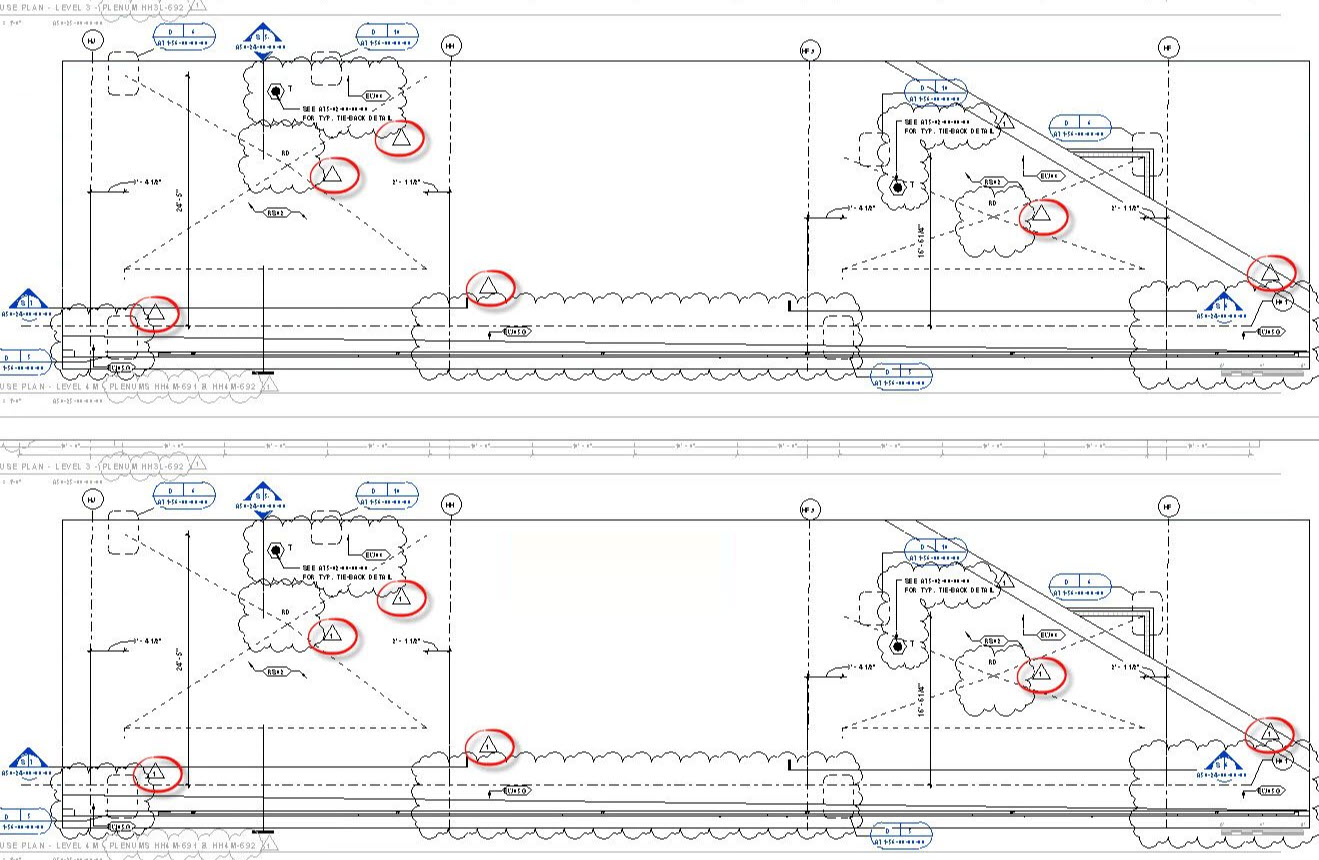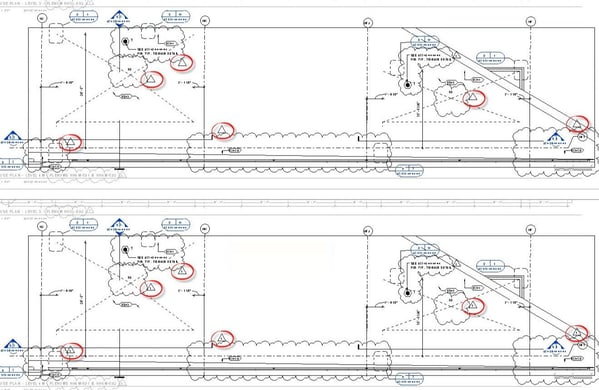
As projects approach the date designated as "Issue for Construction (IFC)," design teams begin planning what portions of the design will be completed in a bulletin. The level of effort needed to complete the documents is usually underestimated, causing even more work to be pushed to the bulletin.
I'm using "bulletin" to refer to any modification to documents after IFC. You may call them addenda, modifications, or something else. The design team for the current example project uses "bulletin." Here is a message received the day before the planned Bulletin issue. This was sent to the entire design team from the interior designer responsible for hotel guest rooms and guest room corridors.
"As mentioned previously it was not possible to cloud our IFC set as many items had changed and developed. Attached is a narrative providing information per sheet and what was updated. Going forward we will be providing clouding on all bulletins."
Here is the timeline for the guestroom portion of the project:
2020-04-24 Bulletin 1
2020-04-15 Issue for Construction
2019-02-26 Model Room Package
Yes, that's right. The designers had more than a year after completing the model room package to complete the guest room drawings ready for IFC. Then 9 days later, the designer issued a bulletin that was too extensive to be able to show all the revisions that occurred on each drawing sheet. The designer's message suggests there may be more changes coming since future bulletins will be clouded.
Planning bulletins while completing construction documents is not uncommon. From our perspective as project specifiers, we see this tactic used routinely. In fact, some teams have planned multiple bulletins before issuing for construction.
There are consequences to this behavior. Reputations may suffer.
The documents will not be fully coordinated. Revisions are difficult to coordinate even when planned with sufficient time to make the changes. Extensive revisions completed in 9 days are likely not well‑coordinated with all other design disciplines. Additional bulletins may be required to accomplish the coordination. Contractors lose confidence in the documents. If bidding is started, interrupting the process with massive changes to the documents brings the risk of something being missed or something being priced twice, plus future requests for information and change orders.

DESIGN MUST STOP, well before the IFC date, preferably at the end of Design Development Phase. CD Phase means construction documents, not continue designing. There must be sufficient time to document the design. There must be ample, scheduled time to check the documents to ensure they are reliable and the design is constructible.
There must be time to protect reputations.





